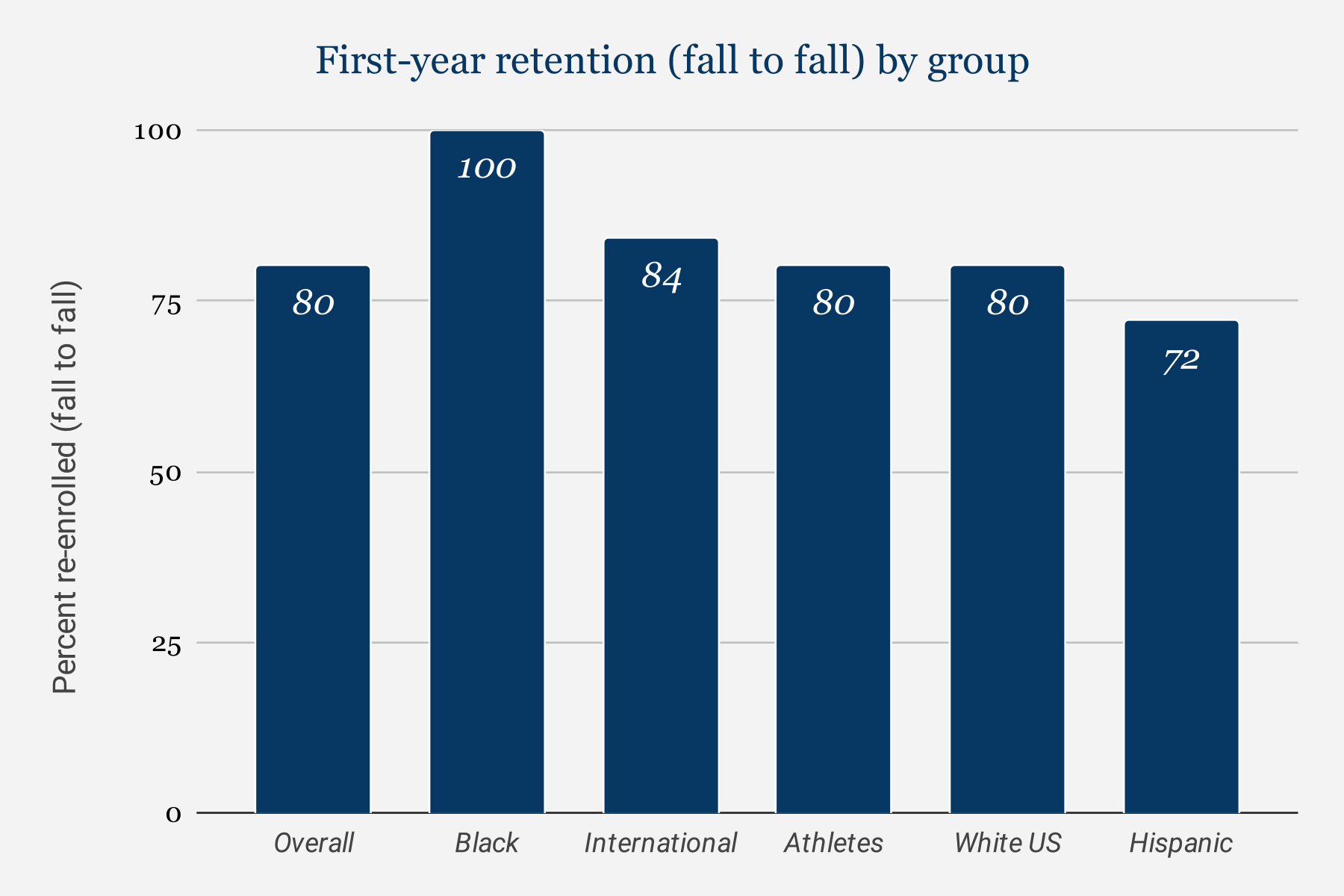Retention is at a seven-year high. Enrollment is dropping.
Down 10% from two years ago, total undergraduate enrollment sits at 699 students, and the incoming first-year class is only 165.This year’s student retention rate was 80%, which rose 10% from the fall of 2022 and met the five-year goal set by the retention task force last year.
“We’re thrilled at this number, looking to hold it,” President Rebecca Stoltfutz said. “Is [it] sort of an unusual high? We’ll see.”
Stoltfuz explained that high schoolers’ experience with the education system has been spotty, and the job market is hot.
She believes that “part of the instability in these numbers” is still due to “pandemic-related forces.”
Despite this, she said, “most of that happened in the year that precedes this one,” and “that’s where the good retention has really helped us.”
Adela Hufford, director of orientation, transition and retention, pointed to two reasons the retention rate may have soared this year.
First is a change in policy for academic performance requirements. All students must meet certain GPA and credit-hour criteria each year, or they can be academically disqualified from continuing at GC. For example, students must have a GPA of 1.75 at the end of their first year and a 2.0 to graduate.
If a student falls below these standards, they are put on warning. “You basically have a semester to recoup and try to get back on track,” Hufford said.
Before last fall, students could be admitted on academic warning if they did not meet the minimum requirements for admission based on their high school performance, leaving them at risk of being disqualified at the end of their first semester. Hufford said the policy was not serving students.
After the change, she said, “we don’t have as many first-year students that are academically disqualified because they’re getting a semester to actually bounce back.”
There is also the shift from a weekend orientation to a week. Hufford is happy with the switch and hopes the comprehensive orientation prepares students for long-term success.
Hufford also previously worked in admissions at GC, which ties into her current position.
“You want so desperately that [after] the work that’s gone into recruiting students, that they want to continue here,” she said.
Steve Wolma, vice president for enrollment management, oversees that work now. Admissions’ goal is to enroll 200 first-year students and 60 transfers each fall.
Wolma emphasized the desire “not simply to get headcount but to get a class that is diverse as to race, socioeconomic status — all those things.”
In the incoming class, for example, they aim to see one-third of athletes, a quarter of Mennonites, and at least a quarter of Hispanic students. The last category is necessary if GC obtains its Hispanic Serving Institution (HSI) certification, granted to schools with at least a 25% Latinx population.
Stoltfutz also noted that this is an area GC is focusing on in terms of retention. The retention rate for Hispanic students this year was 8% lower than the school’s overall average.
The President recognized that some Hispanic students are English language learners, first-generation college students or commuters.
“[The administration] is interested this year in understanding, even more, our commuter student population, how to support first-generation [students] and students who are living with their families,” Stoltfutz said, noting how these factors can provide additional challenges.
Admissions is also working to increase the percentage of African-American students on campus. One way they are attempting to do so is through targeted community engagement programs.
“We feel like right now that our percentage is not reflective of the percentage in Elkhart County,” Wolma said.
To increase overall headcount, Wolma cited restructured roles for admissions counselors, including focusing on Latinx prospective students, realigned counselor and student worker responsibilities, and a change in the consultant company that helps them identify future students.
Wolma is “really trying to put the entire enrollment team in a better place based [on] last year’s data.”



